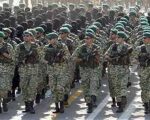As Russia intensifies its use of first-person-view (FPV) drones on the Ukrainian frontlines, Kyiv is deploying new interceptor systems designed to neutralize threats that evade traditional gun-based defenses. These interceptors aim to complement the efforts of frontline machine gunners—often Ukraine’s last line of defense against low-flying kamikaze drones—by targeting UAVs that are too fast or distant for small arms fire.
Gaps in Gun-Based Air Defense Prompt Interceptor Deployment
Ukrainian infantry units have increasingly relied on heavy machine guns and autocannons—such as DShK 12.7×108 mm and ZU-23-2 23 mm twin-barrel systems—to shoot down Russian FPV drones. However, these weapons are limited by range (typically under 2 km effective) and require visual contact with fast-moving targets. As drone operators adapt by flying higher or launching from beyond line-of-sight positions, many UAVs now approach from angles or distances where gunners cannot engage them effectively.
This has led Ukraine’s military to seek mobile interceptors capable of filling the “dead zone” between man-portable air defense systems (MANPADS) and crew-served weapons. According to Ukrainian officials cited by Business Insider, these new interceptors are intended to handle threats that “machine gunners can’t reach,” particularly in contested trench zones where rapid response is critical.
Emerging Counter-FPV Systems in Ukrainian Service
While specific models were not disclosed in the original report, open-source intelligence and recent battlefield footage suggest several types of interceptors may be entering service:
- Drone-on-drone interceptors: Loitering quadcopters equipped with nets or explosive charges designed to collide with incoming FPVs mid-flight.
- Directed-energy systems: Though rare due to power requirements, some reports indicate Ukraine is testing portable microwave or laser-based C-UAS prototypes.
- Short-range missile systems: Adapted MANPADS or micro-missiles mounted on light vehicles may be used for rapid engagement within a few kilometers.
A notable example is Rheinmetall’s Skyranger 30 system—a turreted 30mm cannon integrated with radar and EO/IR sensors—which has been proposed for future deployment in Ukraine under German aid packages. While not yet confirmed operational there, such platforms represent a key evolution in mobile SHORAD (short-range air defense).
Tactical Integration with Frontline Units
The success of any interceptor system depends on its ability to integrate into existing command-and-control structures and react quickly enough against high-speed threats. Ukrainian drone hunters often operate semi-autonomously using commercial tablets linked via Starlink terminals or encrypted radios. To be effective at the tactical edge, new interceptors must support similar decentralized control while maintaining low latency targeting data.
This aligns with Ukraine’s broader shift toward layered C-UAS networks combining kinetic effectors (guns/missiles), electronic warfare (EW), and reconnaissance drones for early warning. In some sectors like Avdiivka and Kupiansk, EW teams jam incoming FPVs while gunners attempt physical shootdowns—and now interceptors will add another layer of redundancy.
The Role of Electronic Warfare Remains Central
Even as kinetic interceptors proliferate, EW remains a cornerstone of Ukraine’s drone defense strategy. Systems like the “Bukovel-AD” and “Nota” have proven effective at jamming GPS signals used by Russian FPVs for navigation. However, newer Russian designs increasingly rely on inertial guidance or visual homing algorithms that resist jamming—making physical interception more important than ever.
This cat-and-mouse evolution underscores why fixed solutions alone are insufficient. Mobile interceptors can reposition dynamically based on threat vectors identified by EW teams or acoustic sensors scattered across the frontlines.
A Layered SHORAD Model Takes Shape
The introduction of drone-specific interceptors marks a shift toward NATO-style layered short-range air defense doctrines tailored for modern drone warfare. Rather than relying solely on legacy Soviet-era systems like Strela-10 or Shilka SPAAGs—which struggle against small UAVs—Ukraine is adopting modular solutions optimized for asymmetric aerial threats:
- Tactical edge: Machine guns + jammers + acoustic sensors
- Mid-layer: Mobile drone-killers + MANPADS + net-equipped quadcopters
- Theater-level: NASAMS / IRIS-T SLM / Patriot batteries vs cruise missiles & aircraft
This multi-tiered approach improves survivability not only for infantry but also for logistics convoys and artillery units increasingly targeted by loitering munitions like Lancet-3 or ZALA drones.
Sustainment Challenges and Future Outlook
Sourcing sufficient quantities of advanced C-UAS equipment remains a challenge amid global demand spikes driven by conflicts in Ukraine and the Middle East. Western suppliers face long lead times for radar-guided SHORAD platforms due to component bottlenecks (e.g., AESA radars, EO/IR modules). As a result, many Ukrainian units still rely heavily on improvised solutions such as mounting jammers onto pickup trucks (“Mad Max” vehicles) or repurposing civilian drones as suicide interceptors.
The long-term effectiveness of these stopgap measures depends on continued innovation from both domestic firms like Ukroboronprom and international partners including Rheinmetall, Saab Dynamics (RBS-70 NG), Thales (RapidFire), and others exploring exportable C-UAS kits tailored for irregular warfare environments.
Conclusion: Toward Agile Air Defense at Tactical Scale
The deployment of new drone-interceptor systems reflects Ukraine’s adaptive response to evolving aerial threats posed by Russia’s prolific use of FPV kamikaze drones. By bridging the engagement gap between machine guns and formal air defense batteries, these tools enhance force protection across dispersed frontlines where every second counts—and every missed drone can mean casualties or destroyed equipment.









